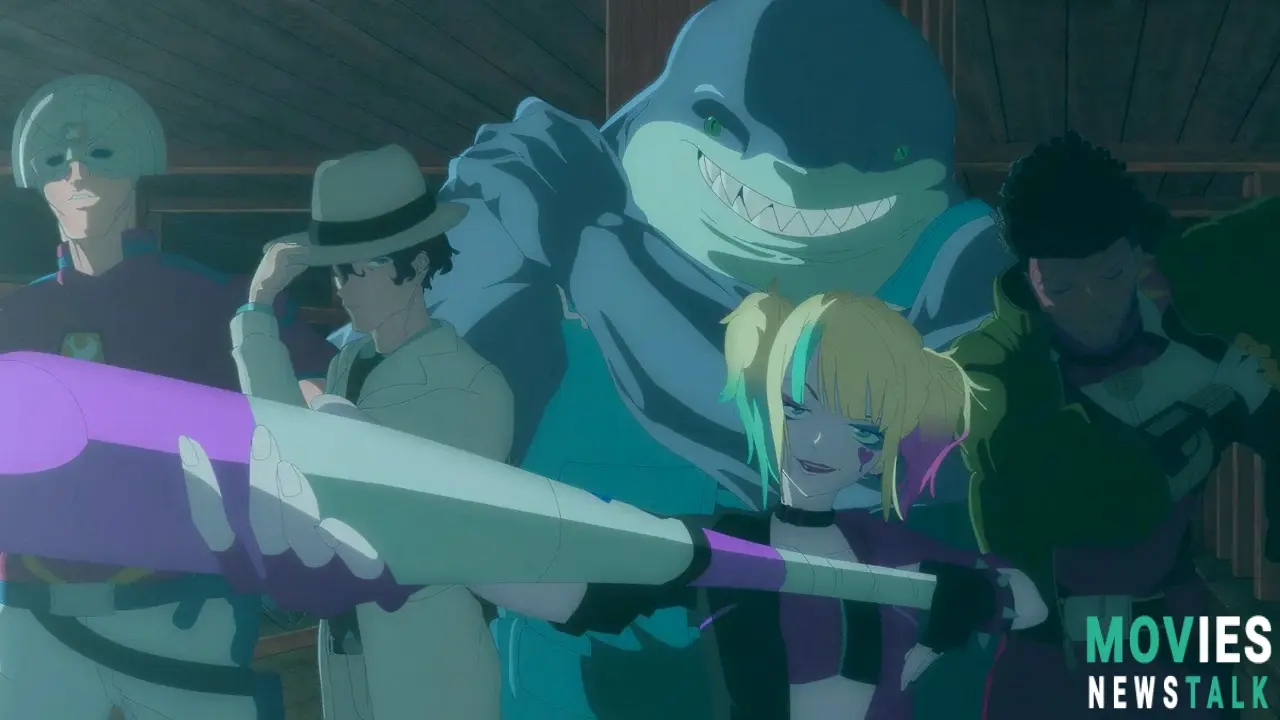Suicide Squad Isekai: Examining the First Three Episodes Deeper
Though they start rather shakily, the first three Suicide Squad Isekai episodes rapidly pick up speed to provide an experience that perfectly embodies the best elements of the franchise. Harley Quinn, Deadshot, King Shark, and others carried to a world of magic, peril, and fantasy this DC trip into the realm of anime. Though the first episodes might not grab the audience right away, by the end of episode three the show seems to be a possibly fun addition to the Suicide Squad universe.
Suicide Squad Iseki: An Original Isekai Experience
Suicide Squad Isekai's premise is DC's collection of expendable villains thrown into a different dimension, a world full of magical ability, ferocious creatures, and a fantasy-based society not especially friendly to outsiders. The first three Suicide Squad Isekai episodes set the foundation for a series that fans shouldn't miss, even while the most interesting features of the plot and the dynamic interactions between the characters take some time to fully show.
Examining the Squad's Personalities: a Crucial Component
Over several movies and games, the Suicide Squad franchise has had its share of ups and downs. Many seasons have seen the team's dynamic—which is marked by the collision of extreme personalities—the highlight. The team of Suicide Squad Isekai discovers they are in an entirely alien environment, which lets them highlight their individual personalities in a way never seen and challenge the limits of their already great talents. This liberty of expression accentuates the charm and appeal of the individuals.
Many great Isekai anime tales carry their characters to a new dimension bursting with magic and mystery. Then these people try to fit their new environment or change the planet to suit them. Suicide Squad Isekai instantly distances the characters from Amanda Waller, their powerful handler, following a similar trend. This calculated action lets the characters flourish in a way they have never seen before, producing an intriguing dynamic that somewhat eclipses the first presentation of the fantasy world.
Breaking Stereotypes: DC Villain New World
Previous Suicide Squad adaptations have found it difficult to provide its ensemble the required room to really embrace their villainous character. If characters like King Shark are shown as devouring innocent citizens, it can be difficult to identify with them. By putting the Squad in a world full of violent monsters and letting them use their talents free from restriction, Suicide Squad Isekai subverts this expectation. The anime style also works for its advantage since it allows the efficient presentation of shapeshifting characters like Clayface in a way that would be quite difficult and expensive to accomplish in live-action.
The Story's Pace: A Magical Metamorphosis
Suicide Squad Isekai's first three episodes show some strange writing decisions that weaken the series' engaging opening. One of the first scenes shows Harley Quinn and The Joker trying to flee the cops in an interesting car run-down under piano keys. The narrative quickly drops Harley and other prisoners into a fantasy world even after they have been caught. This leaves the audience with a meager last view of The Joker in the early episodes, one of the first times an Isekai series devotes little time to introduce its grand setting.
From Individual to Group Dynamic: Changing Focus
Suicide Squad Isekai deviates from most classic stories in not following a single main protagonist. Rather, episodes 1 through 3 give top priority to highlighting prisoners like Harley Quinn, Deadshot, Clayface, Peacemaker, and King Shark taken together. This calculated move gives the characters plenty of time to develop their dynamics before being split apart, producing funny scenes combining comedy and action. These components take front stage until the third episode's story picks steam.
The Evolution of Mystery: Revealing the Fantasy Universe
Surprising DC characters enter as the classic fantasy Isekai world is investigated and help to provide some of the most gripping twists as the riddles start to fall apart. Suicide Squad Isekai shines in showing well-known DC characters using their legendary powers in intriguing contexts inside the magical new world. By the end of episode #3, viewers are probably hooked and eager to find out which other characters would show and how the Suicide Squad's acquired abilities would develop.
Taking DC Villains and Audiences to Another World
Suicide Squad Isekai deftly highlights each major cast member's strengths—especially Clayface, who turns out as a major highlight—despite its slow-burning storyline. In this anime, his skills and demeanor change as he dares to transform one of DC's most hideous villains into a suve and fashionable character who steals almost every scene they come across. The gifted Japanese voice cast, who brilliantly inhabits the characters, may also be responsible for this metamorphosis.
The exciting future of Suicide Squad Isekai
Data about the English dub and release date of Suicide Squad Isekai is still lacking. For the voice acting, it is doubtful that the live-action performers such as John Cena, Margot Robbie, and Will Smith will reprise their famous roles. In its first three episodes, this newest DC anime deftly transforms several fan-favorite characters in a fresh environment and narrative—a feat almost impossible in another media. Suicide Squad Isekai starts slowly but gains much improvement following the first episodes. Suicide Squad Isekai might become a model for turning beloved Western comic characters into gripping anime if the show keeps growing its cast, powers, and secrets of its new world.

